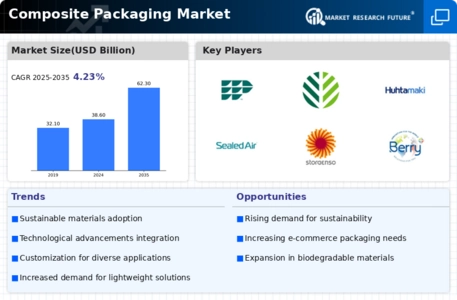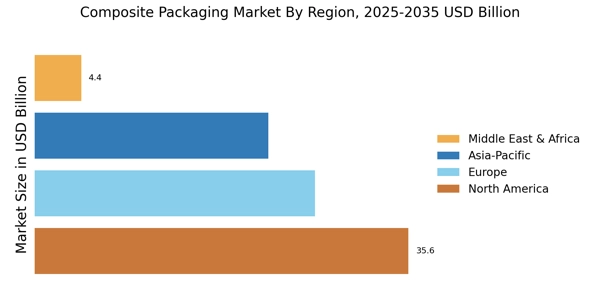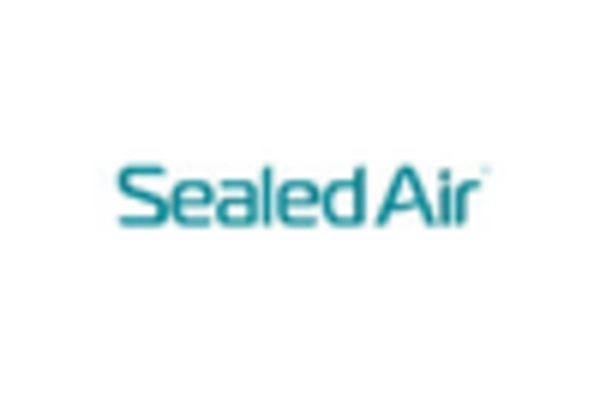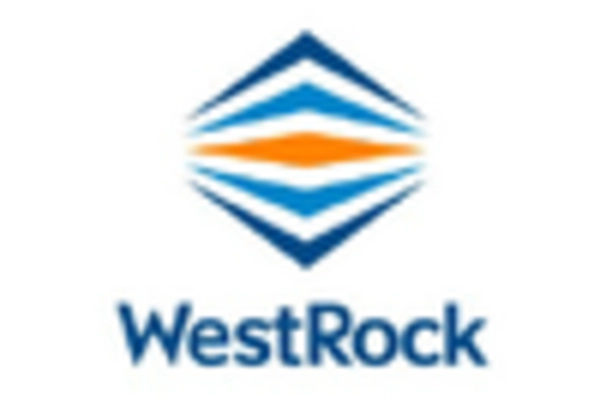Consumer Preferences
Consumer preferences are significantly shaping the dynamics of the Composite Packaging Market. As consumers become more discerning, their demand for high-quality, aesthetically pleasing, and functional packaging is on the rise. This trend is particularly evident in the food and beverage sector, where packaging plays a crucial role in influencing purchasing decisions. In 2025, it is projected that nearly 70% of consumers will prioritize packaging that enhances product appeal and convenience. Additionally, the shift towards online shopping is driving the need for durable and protective packaging solutions. Manufacturers in the Composite Packaging Market must adapt to these evolving consumer preferences to remain competitive and capture market share.
Diverse Applications
The diverse applications of composite packaging are a significant driver for the Composite Packaging Market. This packaging solution is utilized across various sectors, including food and beverage, pharmaceuticals, and consumer goods. The food and beverage sector, in particular, is experiencing a surge in demand for composite packaging due to its ability to preserve product freshness and extend shelf life. In 2025, the food packaging segment is anticipated to account for over 40% of the total composite packaging market share. Additionally, the pharmaceutical industry is increasingly adopting composite packaging for its protective qualities, ensuring product integrity. This versatility in applications is likely to bolster growth in the Composite Packaging Market.
Regulatory Compliance
Regulatory compliance is a critical driver influencing the Composite Packaging Market. Governments worldwide are implementing stringent regulations regarding packaging materials, particularly concerning safety and environmental impact. Compliance with these regulations is essential for manufacturers to avoid penalties and maintain market access. In 2025, it is estimated that compliance-related costs could account for up to 15% of total packaging expenses for companies in the industry. As a result, manufacturers are increasingly investing in research and development to create packaging solutions that meet regulatory standards while also appealing to consumers. This focus on compliance is likely to propel innovation and growth within the Composite Packaging Market.
Sustainability Initiatives
The Composite Packaging Market is increasingly influenced by sustainability initiatives. As consumers become more environmentally conscious, companies are compelled to adopt eco-friendly packaging solutions. This shift is evident in the rising demand for recyclable and biodegradable materials, which are integral to composite packaging. In 2025, the market for sustainable packaging is projected to reach approximately 500 billion USD, indicating a robust growth trajectory. Companies that prioritize sustainability not only enhance their brand image but also comply with stringent regulations aimed at reducing plastic waste. This trend is likely to drive innovation in the Composite Packaging Market, as manufacturers explore new materials and processes that align with sustainability goals.
Technological Advancements
Technological advancements play a pivotal role in shaping the Composite Packaging Market. Innovations in material science and manufacturing processes have led to the development of lighter, stronger, and more versatile composite materials. For instance, advancements in nanotechnology and smart packaging solutions are enhancing the functionality of composite packaging. In 2025, the market is expected to witness a compound annual growth rate of around 6%, driven by these technological innovations. Furthermore, automation in production processes is improving efficiency and reducing costs, making composite packaging more accessible to a wider range of industries. This technological evolution is likely to redefine standards within the Composite Packaging Market.


















Leave a Comment